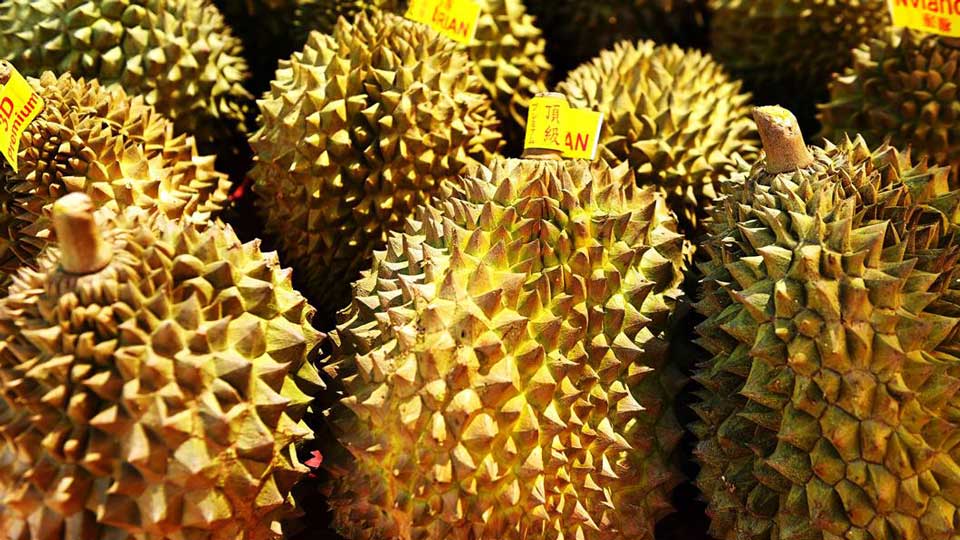October 2, 2025 | 01:23 GMT +7
October 2, 2025 | 01:23 GMT +7
Hotline: 0913.378.918
October 2, 2025 | 01:23 GMT +7
Hotline: 0913.378.918
Poonpong Naiyanapakorn, director-general of TPSO, attributed this success to growing global demand and the appeal of Thai fruit due to its quality and distinctive flavors.

Durians for sale in Qingdao in 2024. Photo: CFOTO/Nur.
In 2024, Thailand's total fruit exports reached US$6.51 billion, surpassing the five-year average of US$5.86 billion and accounting for 22.6% of total agricultural exports. Fresh fruit alone generated US$5.15 billion, with durian, longan, mangosteen, young coconut, and mango as the primary export items.
The country exported 859,183 tons of durian worth US$3.76 billion, contributing 72.9% of the total fresh fruit export value. China remained the dominant market, receiving 97.4% of these shipments, followed by Hong Kong, South Korea, Malaysia, and the United States.
Longan exports totaled 527,927 tons, generating US$571 million, with China accounting for 73.1% of shipments. Other markets included Indonesia, Vietnam, Malaysia, and India. Mangosteen exports reached 284,860 tons worth US$491 million, with 91% going to China, followed by Vietnam, South Korea, the US, and the UAE.
Thailand exported 257,428 tons of young coconuts worth US$217 million, with major destinations including China (82.7%), the US, Hong Kong, Singapore, and the Netherlands. Mango exports amounted to 106,753 tons, valued at US$33 million, with South Korea leading at 61.8%, followed by Malaysia, Japan, Vietnam, and Laos.
Mr. Poonpong noted Thailand's heavy reliance on China for fresh fruit exports, raising concerns over increased competition—especially for durian. Since 2023, China has allowed durian imports from not only Thailand but also Vietnam, the Philippines, and Malaysia, while also tightening import regulations.
To stay competitive, Thailand aims to diversify its export markets, targeting new destinations such as the US, Germany, the Netherlands, and the UK. This strategy is intended to reduce dependency on China and help absorb potential market pressures, according to Mr. Poonpong.
The Commerce Ministry plans to strengthen exports by entering new markets, supporting value-added agricultural processing, and preparing strategies to manage production and maintain market stability.
freshplaza

(VAN) From the Tra My cinnamon region, Huong Que products are reaching out to the world, affirming the Vietnamese OCOP brand with international quality standards and the cultural story of the region.

(VAN) With a growth of 359% in the first eight months compared to the same period last year, tilapia exports could reach the aforementioned milestone.

(VAN) Of Ha Tinh's total area of over 359,000 hectares of forest and unwooded land, more than 34,000 hectares have been granted FSC (Forest Stewardship Council) sustainable forest management certification to date.

(VAN) Vietnamese businesses have a strong demand for domestically generated carbon credits to fulfill their greenhouse gas emission reduction obligations.

(VAN) Thanks to the strong application of e-commerce platforms, many OCOP products in Hue City have gone beyond traditional consumption channels and reached a wider range of consumers.

(VAN) Several factors have converged to make 2025 a difficult year for rice farmers and their industry allies.

(VAN) During the first 8 months of 2025, Russia exported 12,500 tonnes of eggs. This is 93.3% more than during the same period of the previous year.